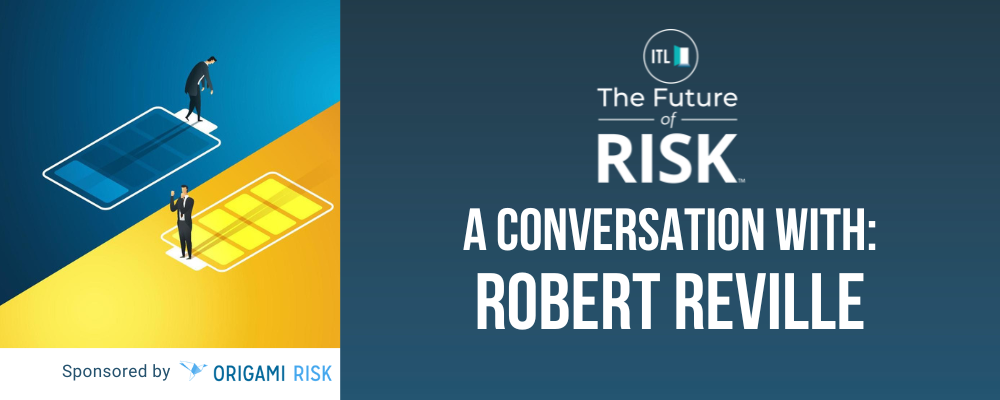Sorry for being delinquent about publishing my newsletter over the past few months: It has been due to a lack of time (I was writing three white papers) and inspiration. The newsletter has now reached its third anniversary, with 43,219 of you choosing to subscribe. Respecting your time over these 36 months, inspiration worthy of your attention has struck me just 21 times.
Many of you have asked when I might provide my perspective on the recent facts and figures of the trio I have followed: Lemonade, Hippo and Root. Now, with their annual financial results available, is an opportune moment to examine the performance of the three publicly listed U.S. P&C insurtech carriers.
There is, for sure, some good news for their fans (and shareholders).
Lemonade
Significant growth. The company almost reached the 2.5 million customer milestone, and the last two quarters showed an increase of the customer base not seen since 2021 (excluding the effect of the Metromile acquisition), with growth aligned with the 2022 promises.
Cash flow positive. For the first time in Lemonade's history, the operative activities generated positive cash flows in the past two quarters ($16 million in Q3 and $11 million in Q4).
The loss ratio has progressively improved (73% '24 gross loss ratio compared with 85% in 2023).
Hippo
The top line has grown. Total generated premiums – which includes the iconic Hippo’s homeowner business, premiums generated by their agency, and the Spinnaker fronting business – has grown from $1.1 billion to $1.3 billion in 2024
The company had its first profitable quarter (after a historical series of losses): $44 million net income in Q4 ‘24
The combined ratio (gross) significantly improved, with a healthy landing below 80%.
Root
The top line has grown to $1.3 billion in '24 from $800 million in '23.
Profitable. For the first time, they close the year with a positive bottom line ($31 million in profits in ‘24 vs $144 million loss in ‘23)
Combined ratio (gross) healthy, below 100%. The loss ratio has significantly improved – consistent with market trends – and the administrative cost incidence has been under control.
BUT there are significant reasons for not being too optimistic about these insurtech ventures.
Lemonade
The company still loses a ton of money. Net losses accounted for about $200 million in ’24 (a bit less than the $218 milliion in ’23), bringing the cumulative losses since the creation to $1.27 billion and reducing shareholder equity below $600 million.
The gross combined ratio is still well above 100% (each dollar of premium has cost them more than $1.20).
They are sill far from being an efficient insurance carrier. All their costs (excluding claims, loss adjustment expenses, and marketing) still gravitate above 30% of premium. “Collapse cost” [thanks to my friend Adrian Jones for the snapshot below] can be seen as a hope, an over-promise, or a bul***it depending on your taste for Lemonade.
Hippo
The positive results of the last quarter have been boosted by $46 million thanks to the sale of First Connect (Hippo’s independent agent platform).
The fronting business is the only profitable business, and its top line grew double digits. As the last newsletter edition highlighted, “The only segment consistently generating profits is the business of giving UW capacity to MGAs [...] further confirming that the acquisition of Spinnaker in 2020 has been the best management decision in the history of this venture.” No significant changes here: The fronting business ("insurance-as-a-service") made $24.4 million in profit, while the original Hippo business (HHIP) lost more than $50 millon in '24.
Hippo’s original homeowner business (HHIP) has been further pruned, landing a 73% gross loss ratio in ’24 (101% in ’23). A cherry-picked sub-$300 million homeowner insurance portfolio is a humble position from which to (re)start. After burning $1.27 billion to build this business, this doesn't exactly seem a milestone to celebrate.
Root
Vanished portfolio growth. Root has been stuck slightly above 400,000 policies for the past four quarters, with prudent marketing spending and constant increase of the average premium, which allowed them to keep the gross combined ratio below 100%.
But the magic moment when the auto insurance market dislocation allowed them to grow, even significantly increasing prices, is gone. Now, almost all the big incumbents are back to profitability and will start chasing new business again. How will Root deal with this scenario? Will they be able to consistently show the growth you expect from a “challenger”? Or, will their journey fail to create anything relevant in the market's competitive dynamics and only slowly repay the $1.7 billion they have burned until now.
Much of Root's equity narrative, and a substantial portion of Lemonade's projected upside from its investor day, revolve around automotive telematics. Yet, compared with current telematics best practices, both appear rather amateurish.
Telematics (when used well) is a social good because it increases the availability and affordability of coverage. This happens when the carrier becomes able to provide the same level of coverage for a lower price to a significant part of the portfolio while maintaining the target level of profitability. To do this, telematics data must be used to 1) match rate to risk better, 2) manage claims better, and 3) reduce expected losses.
Our dear insurtech Lemonade talks only matching rate to risks, or pricing sophistication (Lemonade had one slide on claims at its investor day and 21 charts about telematics. Lemonade makes promises about the future (as always).I
Root, meanwhile, talks about a current capability, their supposed superiority in matching price to risk. So let’s compare Root performance with the best practice (Progressive) in using telematics data for pricing sophistication. The competitive gap emerges clearly: Progressive has grown the number of policies by more than 16% in the past nine months, Root only a modest 3.5%.
About the second telematics use case: Telematics and claims seem to be a match made in heaven. Instead of waiting for the policyholder's first notice of loss, the insurance carrier is informed in a timely way that something happened and has objective information about the dynamic and probable consequences of the event.
The third usage of telematics data, totally ignored by our dear insurtechs, is to keep accidents from happening. Let's focus on one of the less-known but more important approaches: real-time actions. About this, I want to share an abstract of the interview with Massimiliano Balbo di Vinadio , vice president of sales LA at Targa Telematics , one of the members of the IoT Insurance Observatory .
MC: What is Targa's history, and how did the journey lead to the acquisition of Viasat?
MBV: "Targa Telematics is a technology leader with over 20 years of experience in developing cutting-edge solutions that help businesses, organizations, and communities fully leverage the Internet of Things and AI. The company offers a wide range of software solutions for vehicle rental companies, financial institutions, insurance companies, brokers, and large fleet managers. These include insurance telematics, fleet management, and asset management solutions.
In 2006, the company acquired Targa Infomobility from Fiat Auto, which specialized in infomobility services, satellite anti-theft systems, and fleet management. In 2012, Targa Drive was established to provide insurance companies with telematics solutions.
In 2023, Targa took a significant step by acquiring the Viasat Group, expanding its presence in key European markets such as Italy, France, Portugal, Poland, Romania, Spain and the U.K., but also in Chile. This acquisition strengthened its position in the insurance market, allowing Targa to offer advanced telematics insurance solutions, meeting the increasing demand for data-driven, personalized insurance.
In January 2024, Targa expanded its telematics portfolio by acquiring Drive It, a spin-off from Earnix. This acquisition has introduced MaaS (mobile as a sensor) functionalities and further strengthened Targa's AI capabilities.
With its extensive experience and continued innovation, Targa Telematics now offers a comprehensive portfolio of insurance solutions."
MC: Risk prevention has been discussed frequently at the plenary sessions of the IoT Insurance Observatory. What is Targa's experience with real-time feedback to drivers? Can you share any facts and figures about the risk reduction achieved?
MBV: "Risk prevention is a significant topic and Targa Telematics is at the forefront of this. Our experience with real-time feedback to drivers showcases the power of telematics in fostering safer driving behaviors and reducing insurance risk. A standout feature of Targa Drive is its coaching module, which delivers real-time audio notifications to guide drivers during their journeys, helping them adjust unsafe behaviors on the spot. Drivers also receive daily or weekly feedback aimed at improving their driving style and promoting sustainable driving habits over time. This personalized approach has led to significant risk reduction and behavior improvement among our users.
The drivers can be further motivated through metrics on streaks (continuous safe driving days) and trends that offer an objective view of their progress. A customized reward program can be also made available for insurers, allowing them to deliver promotions and incentives tied to the driver's recorded improvement. This helps insurers enhance engagement while fostering a continuous improvement culture among policyholders.
We also see notable success with our windscreen devices, which are equipped with advanced sensors, including GPS tracking, and three-axis accelerometer. These devices collect crucial data for crash management, speed monitoring, geofencing, and emergency call services. The coaching function in these devices, delivered through non-intrusive LED indicators, provides real-time guidance to help drivers improve their habits. Several of our customers have successfully integrated this device into their operations, reducing accident rates and promoting safer driving. On average, customers who have adopted this solution have reported a 30% improvement in their drivers' scores."
MC: What is your vision about the future of auto insurance?
MBV: "IoT and AI are set to revolutionize the mobility landscape and therefore key players such as insurances, leasing and rental companies just to name a few. By focusing on prevention through better driving behaviors, combined with the power of data analytics, the industry can reduce claims frequency and severity, delivering more sustainable and customer-friendly outcomes."





























